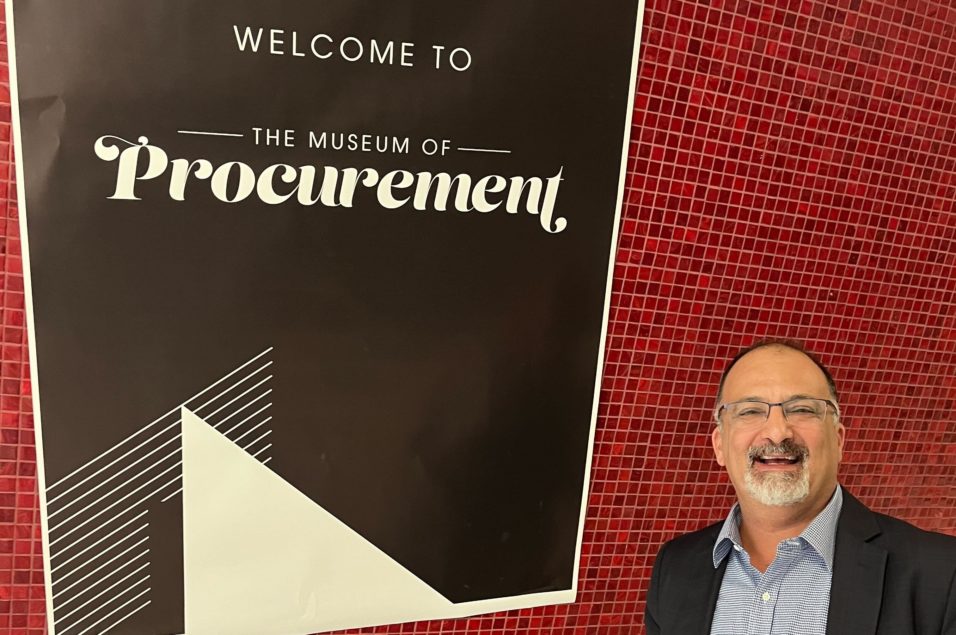
After the growing move to mainstream parlance of supply chain matters, it may come as no surprise that we’re now seeing museum exhibits open to the public, dedicated to exploring supply chain-related disciplines, usually as a result of a commercial/non-profit partnership. First came the supply chain-themed “Systems” exhibit at the New York Museum of Modern Art in January 2023. Then, the Georgia Logistics Association opened its Supply Chain & Logistics Innovation (SCALI) showcase in Atlanta in August. Now comes the Arkestro Museum of Procurement, which will be in residence at Rutgers Business School in Newark, NJ, through the end of December 2023, following a stint at the Sam M. Walton College of Business at the University of Arkansas.
The organizers have designed the museum to highlight the past, present and future of procurement, and they hope it will inspire future supply chain and business leaders about the exciting opportunities that lay ahead in this industry.
“It’s really a celebration of the history of the supply chain and procurement professions,” says Dr. Arash Azadegan, Ph.D., professor and vice chair of the Supply Chain Management Department at Rutgers Business School. “It started with a single realization. I was in Detroit at the Institute of Art, and they had an exhibit on the history of writing, and it showed the oldest human written thing that we have, written in cuneiform from Sumeria, and it’s a goods receipt. That’s literally the first record we have of human written communication anywhere on the planet. And it got me thinking.”
The museum, sponsored by predictive procurement software provider Arkestro, consists of an interactive, modular exhibit highlighting notable procurement professionals through the ages, and reproductions of influential procurement documents and instruments from around the world.
Visitors to the museum will learn more about how different cultures handled procurement, billing, debt, accounting, and other concepts vital to a functioning civilization. The museum chronicles the evolution of the procurement function from that first goods receipt to the invention of the general ledger and to double entry accounting, ultimately concluding with the invention of ERP systems, the creation of the Internet and, finally, today’s predictive procurement technology.
Dr. Azadegan points to the intriguing fact that credits and debits were once computed on a checkered board, and that there are still references to this embedded in our daily lives – including the word “check” and the term “Chancellor of the Exchequer in the U.K. “Once you connect the dots, you get magic, and the history comes alive.”
Dr. Azadegan says the museum offers a public service to the supply chain profession, and will encourage more young people to consider it as a career. “The enthusiasm gap and the talent pipeline are chronic topics that executives are always talking about. So we thought: What if we could create something that makes people smile and realize how many stories there are, of human relationships in commerce, specifically buying, moving and delivering goods?”
“There has never been a more optimal time for business students to seriously consider careers in procurement. Everything you can see has most likely passed through a procurement process and moved through a supply chain,” Dr. Azadegan says. How can you not be curious about this fundamental layer of progress?”
- SEO Powered Content & PR Distribution. Get Amplified Today.
- PlatoData.Network Vertical Generative Ai. Empower Yourself. Access Here.
- PlatoAiStream. Web3 Intelligence. Knowledge Amplified. Access Here.
- PlatoESG. Carbon, CleanTech, Energy, Environment, Solar, Waste Management. Access Here.
- PlatoHealth. Biotech and Clinical Trials Intelligence. Access Here.
- Source: https://www.supplychainbrain.com/articles/38312-rutgers-business-school-to-host-arkestros-museum-of-procurement



